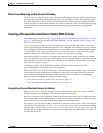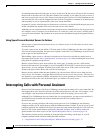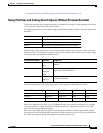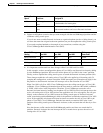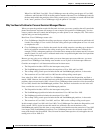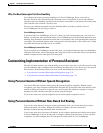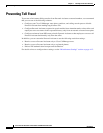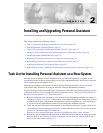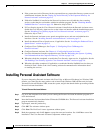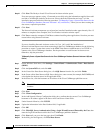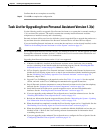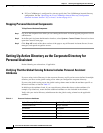
1-23
Cisco Personal Assistant 1.4 Installation and Administration Guide
OL-4590-03
Chapter 1 Planning for Personal Assistant
Customizing Implementation of Personal Assistant
Why You Need Interceptor Port Error Handling
You configure interceptor port error handling to tell Cisco CallManager how to route calls to
Personal
Assistant users when the Personal Assistant server is unavailable. If you do not configure
interceptor port error handling, and if Personal
Assistant is unavailable, a user phone will not ring when
called, and the caller will hear a fast busy tone.
The way you configure interceptor port error handling differs according to which version of
Cisco
CallManager you are using, as follows.
Cisco CallManager Version 3.x
If you are using Cisco CallManager version 3.x, when you create an interceptor port, you create two
entities: a route point, and a translation pattern. Cisco
CallManager uses the translation pattern for error
handling. Each translation pattern must match the set of numbers in the corresponding interceptor port
route point. The translation patterns must not be placed in the PA partition, as this could cause a match
even when the Personal
Assistant server is available.
Cisco CallManager Version 4.0 or Later
If you are using Cisco CallManager version 4.0 or later, you configure interceptor port error handling by
setting the Forward No Answer destination and calling search space to the same values as the directory
number configured for the interceptor CTI route point.
Customizing Implementation of Personal Assistant
Personal Assistant provides users with the ability to access their voice mail, to call other users by using
speech commands, and to configure rules for handling incoming calls. If you choose not to use some of
these features, the following sections can assist you in determining what you need to do:
• Using Personal Assistant Without Speech Recognition, page 1-23
• Using Personal Assistant Without Rule-Based Call Routing, page 1-23
Using Personal Assistant Without Speech Recognition
You can use Personal Assistant without using the speech-recognition capability. Without speech
recognition, your users can interact with Personal
Assistant only by using the touch-tone interface. Thus,
instead of talking to Personal
Assistant, the user must learn the key sequences required to navigate
through voice mail, and they must spell out names using the keypad.
If you do not want to use speech recognition, do not install speech-recognition servers.
Using Personal Assistant Without Rule-Based Call Routing
If you do not allow Personal Assistant to intercept incoming calls, you can use Personal Assistant
without rule-based call routing. Without rule-based call routing, your users cannot have
Personal
Assistant intercept and handle their incoming calls.
If you do not want to use rule-based call routing, do not configure partitions and calling search spaces
in Cisco
CallManager. You also do not need to configure intercept ports. However, if you use speech
recognition, you must configure the CTI route point and media ports in Cisco
CallManager.



